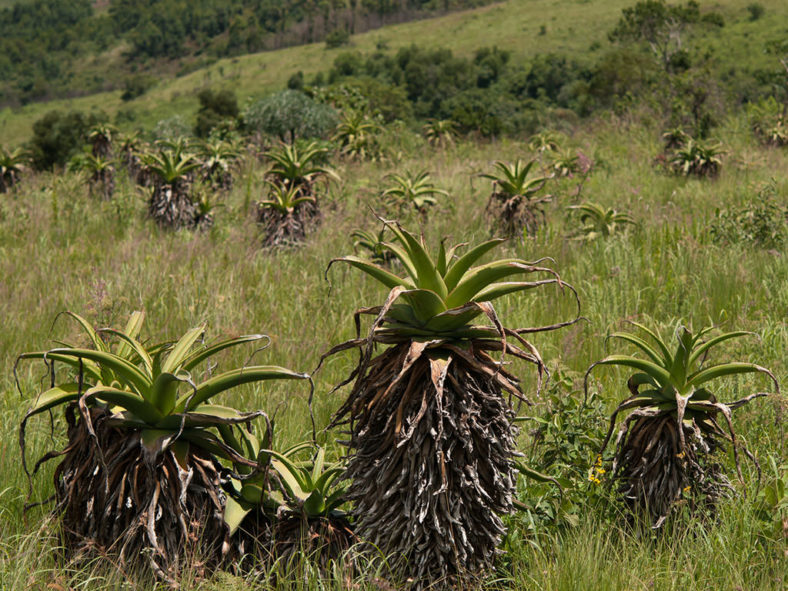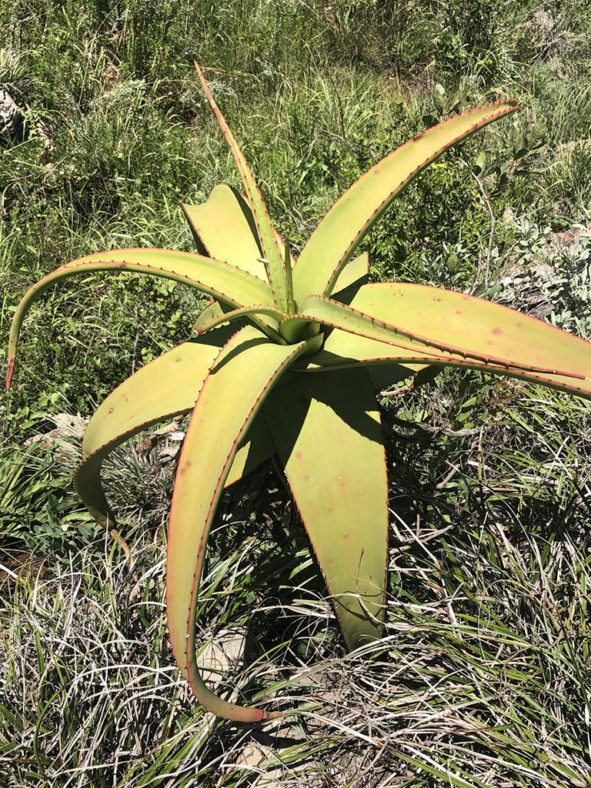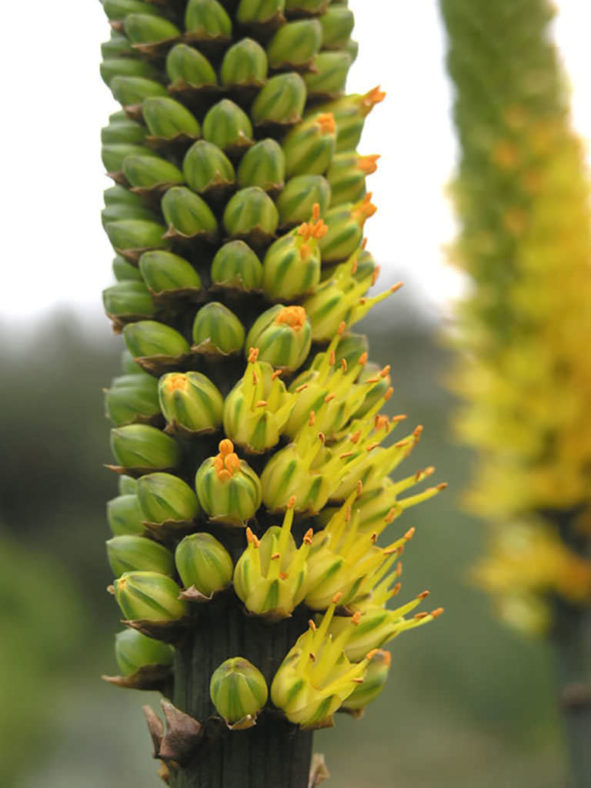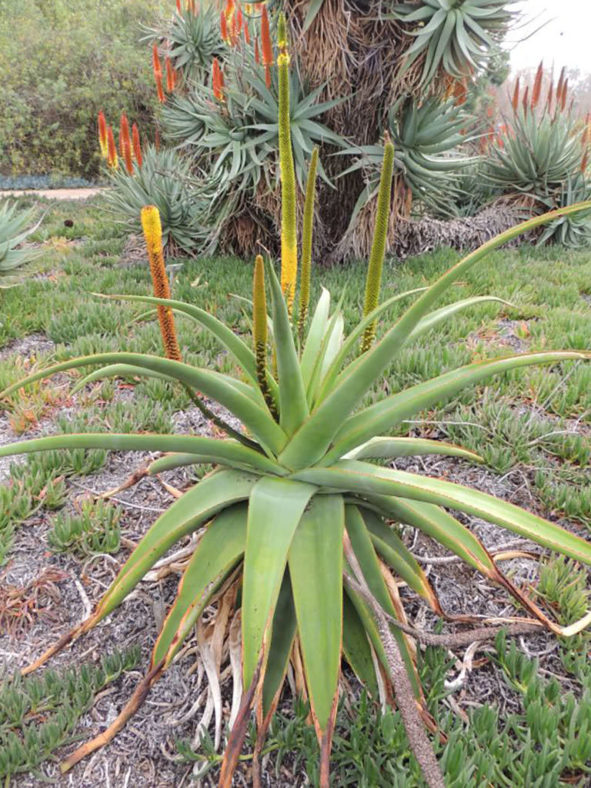Scientific Name
Aloe alooides (Bolus) Druten
Common Name(s)
Graskop Aloe, Skirt Aloe
Synonym(s)
Aloe recurvifolia, Notosceptrum alooides, Urginea alooides
Scientific Classification
Family: Asphodelaceae
Subfamily: Asphodeloideae
Genus: Aloe
Etymology
The specific epithet "alooides (al-oh-OH-id-eez)" means "resembling Aloe" and refers to the fact that this species was first described as a species of the genus Urginea, which bears a resemblance to Aloe.
Origin
Aloe alooides is native to South Africa. It occurs in shallow soil on dolomite outcrops in a limited area of the Mpumalanga escarpment.
Description
Aloe alooides is a large, tree-like succulent with a stout stem covered with old, dried, persistent leaf remains and topped with a dense rosette of olive-green to sometimes slightly reddish leaves. It can grow up to 13.1 feet (4 m) tall. The stem is usually simple or rarely branched near the base. The leaves are lance-shaped and deeply channeled, measuring up to 4.3 feet (1.3 m) long and 7 inches (18 cm) wide. They are spreading and considerably recurved, with the apices of the lowest leaves often touching the stem. The margins of the leaves are armed with red, brownish-tipped teeth and usually have a distinct reddish edge.
The flowers are lemon-yellow, cylindrical-campanulate, appear in winter, and can reach up to 0.4 inches (1 cm) in length. The inflorescences are simple, 3 to 5 from a rosette, and can grow up to 4.3 feet (1.3 m) tall. The racemes are densely multiflowered, narrowly cylindrical, and can reach up to 32 inches (80 cm) long and 2 inches (5 cm) in diameter. The fruits are oblong capsules, about 0.4 inches (0.9 cm) long and 0.3 inches (0.7 cm) in diameter.

How to Grow and Care for Aloe alooides
Light: When growing A. alooides indoors, place your plant in a window that gets plenty of bright indirect sunlight. Rotate the pot once or twice a week so that all sides of the plant receive equal lighting. Outdoors provide light shade, especially during the hottest parts of the day.
Soil: Plant A. alooides in a well-drained soil mix formulated for succulents or make your own. Drainage is essential because too much moisture around roots can cause root rot.
Temperature: This succulent grows at its best at temperatures between 50 to 85 °F (10 to 30 °C). When temperatures shift below 50 °F (10 °C), it is time to bring your plant back inside. A. alooides can withstand temperatures as low as 25 °F (-3.9 °C). USDA Plant Hardiness Zones 9b to 11b, 25 to 50 °F (-3.9 to 10 °C).
Watering: This succulent does need regular watering but is very tolerant of drought conditions for short periods. Water deeply, but only when the soil is dry. Cut back on watering during the winter months. Do not let water stand in the rosettes.
Fertilizing: A. alooides generally does not require fertilizer but may benefit from the extra nutrients. Feed with a fertilizer for succulents in spring and summer only. Be sure to follow the label directions.
Repotting: This plant is not particularly fast-growing and will only rarely need repotting. Repot it in the spring in a container a few inches larger in diameter every few years to keep it from becoming rootbound.
Propagation: Since a species with a usually solitary growth habit, A. alooides can be propagated only from seeds. For best results, sow seeds during the warm months.
Learn more at How to Grow and Care for Aloe.
Toxicity of Aloe alooides
A. alooides is not listed as toxic for people and pets.
Links
- Back to genus Aloe
- Succupedia: Browse succulents by Scientific Name, Common Name, Genus, Family, USDA Hardiness Zone, Origin, or cacti by Genus
Photo Gallery
Click on a photo to see a larger version.


